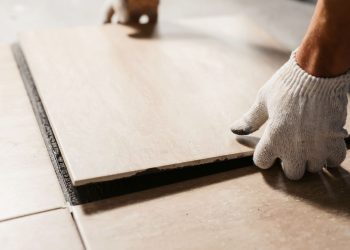One of the most significant ways to change a room’s appearance is with countertops. In the kitchen, they can make a substantial design statement. In the laundry room and mudroom, they are an essential part of how efficiently you work. And, in the bathroom, they can tie the space together. Every material has pros and cons. So, selecting the best material for using the space and your design aesthetic should guide your decisions. Read on to learn more about the best counter surfaces for every room of the home.
Kitchen
Marble is the most classic choice for a kitchen counter. It’s a natural material, so no two marble countertops are alike. While marble will etch over time, it is also unique and part of its charm. Since marble is a porous material, it must be sealed regularly to prevent staining.
Granite is another natural material and is known for its durability. It can withstand high temperatures and is available in various color choices. It’s also a low-maintenance selection, which works well for busy households.
Quartz is known for being low-maintenance and stain resistant. It’s an engineered stone made of quartz and other minerals and resins. Quartz is available in a wide variety of colors and often mimics the appearance of marble. Since it’s not a natural stone, it doesn’t require sealing and is non-porous, so it resists permanent stains. However, quartz isn’t known for standing up to heat since it’s made with plastics and resins, so it’s essential to avoid putting hot dishes on the surface.
Wood countertops bring warmth and elegance to a kitchen. Wood counters are often known as butcher blocks and can be paired with marble or other stone counters to add depth and dimension to a room. The most common hardwoods to use are maple and oak. Butcher block counters are easy to clean and can last long if cared for correctly. However, they can be easily scratched, cut and prone to water damage and bacteria if they are not sanded and resealed regularly.
Quartzite is a natural stone that is the ultimate in luxury counters. It’s important not to confuse quartz with quartzite. Quartzite is harder than granite, resembles marble, has rich, beautiful veining, is durable, stain and scratch-resistant, and is almost maintenance-free.
Laundry room or mudroom
Creating a beautiful laundry room can make this never-ending household chore feel lovelier. However, durability is still the most crucial factor to remember when selecting the finishes. Quartz countertops are incredibly durable and come in many colors and patterns.
Bathroom
Marble counters in a bathroom create a classic and timeliness appearance. A marble with heavy veining can create a dramatic space, which makes a statement in a powder room, while a lighter, more subtle marble can create a more serene vibe. Since it is prone to staining and etching, you’ll want to wipe up water and reseal it regularly every six months.
Granite is another excellent bathroom counter choice because of its resilience and strength. Granite offers the benefits of natural material without etching.
Quartz is an excellent choice for children’s bathrooms since it’s low-maintenance and resists water etching.
Butler’s pantry
You can select materials that make more of a statement in a small space, such as a butler’s pantry. Soapstone is a moody, dark gray stone that is smooth to the touch and will darken over time. Its patina over time results in an elegant, historical look. Soapstone can be stain resistant, and its damage can be sanded out. However, soapstone does require regular maintenance by rubbing mineral oil across the source and is prone to scratches and dents.











